If you’re interested in discovering the history of your property, there are several amazing resources out there. However, many records provide limited information, some just the name of previous owners. However, the US census records paint a fascinating story (with detailed information) about the people who previously lived in your house. Read on for a tutorial PLUS 6 tips on how to use the US census to find your property’s history.
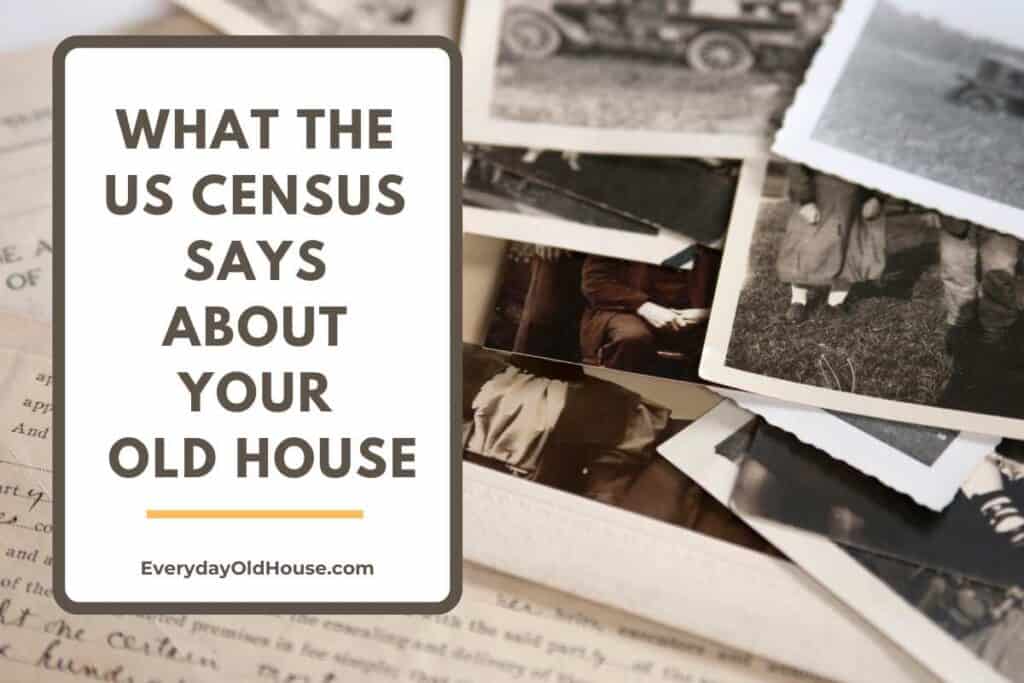
What is the US Census?
First, the basics. Every decade, the US Census Bureau undertakes a huge initiative to gather a host of demographics about every person living in the country. Formally known as the decennial census, but commonly referred to as the US census, it’s actually the largest non-military initiative performed by the federal government.
The goal of the information gathered in the census helps to plan a wide variety of government programming, including healthcare, education and employment services. However, if you’re a homeowner curious about your home, you’ll be more interested in the US census to find your property’s history.
Why the US Census is So Awesome
The length and depth of the information in the US census makes it a wealth, treasure trove, etc. of information.
Why?
First, the US census has been around for a loooong time – it was legally mandated in the US Constitution! According to Find My Past, the first census was in 1790, took 9 months to complete, and was overseen by Thomas Jefferson himself!
Can you think of another database that contain data as far back as 1790?!?!?! I can’t.
Second, as you read further you’ll leave that the census collected a staggering number of demographics collected for each census, especially after 1850. For example, occupation, country of birth, marital status, even level of education! With the US census, not only will you know the names of the people who used to live in your house, but also a peek into their lifestyles.
How Do You Access the US Census?
The US census records are browsable and digitally available online through a handful of ways.
First, there is there the direct link to the federal government’s database. Note that while the US Census Bureau is responsible for conducting the census, the National Archives and Records Administration houses the online databases.
However, some find using this website cumbersome to work with. For example, the zoom function is a bit limited.
Another option are genealogy databases such as Ancestry, HeritageQuest, and FindMyPast. These tend to have more user-friendly databases, but many of these require a paid subscription.
[Note that FamilySearch does offer a free subscription. And in my opinion, worth checking out. Below I include them in the tutorial on using the US census to find your property’s history.]
Before subscribing to a paid website, check with your local library for potential access. For example, my library provides access to some of these ancestry databases free of charge (with a library card).
Can You Access All Years Online?
Unfortunately, no. Not all years of the US census are publicly available. ?
Now, your instincts would probably tell you that the oldest census reports (aka 1790) aren’t available.
But you would be wrong.
It’s quite the opposite. The most recent years of censuses are not available for review. Why? For confidentiality reasons, a law was implemented in the late 1970s that set a 72-year restriction “or wait period” to access the census.
That means the most recent US census available for review is 1950.
[Sidenote: There is some debate on why the 72-year restriction. Why so specific? Why not just round it to 70? The most likely explanation is that 72-73 years was the average life expectancy in the US when the law went into effect.]
What Information is Available in the US Census?
In the early days of the census, the level of detail gathered was limited. But through the decades, the need for more detailed information was realized.
1790 – 1850
The information found in these early years of census was limited. Early America censuses were more focused on taxation, voting and military service. Which applied mainly to just white males.
As a result, the types of information in censuses taken between 1790-1850 generally included just names and counts, but may also include:
- Head of household Name
- Number of free white males (over 16 years old)
- Number of all free white females
- Number of slaves owned
Here’s a copy of the Newport, RI census in 1800.

Post 1850
From 1850 onward, demographics collected expanded their focus from the head of household to ALL individuals in a home. An impressive amount of detail was collected, offering a valuable glimpse into the everyday lives of Americans.
Questions were added or modified for each census depending on what was relevant or deemed important at the time. For example:
- 1890 census: During the height of immigration, questions were added on year of immigration, naturalization status and ability to speak English.
- 1930 census: Homeowners were questioned about radio ownership, gathering the first type of technology entering homes.
In general, census post-1850 includes a wealth of demographic information including the following:
- Occupant Names
- Owners or Renters
- Relation to Head of Household
- Ages
- Marital Status
- Education
- Birthplace
- Parents Birthplaces
- Citizenship
- Employment Status
- Farm Status
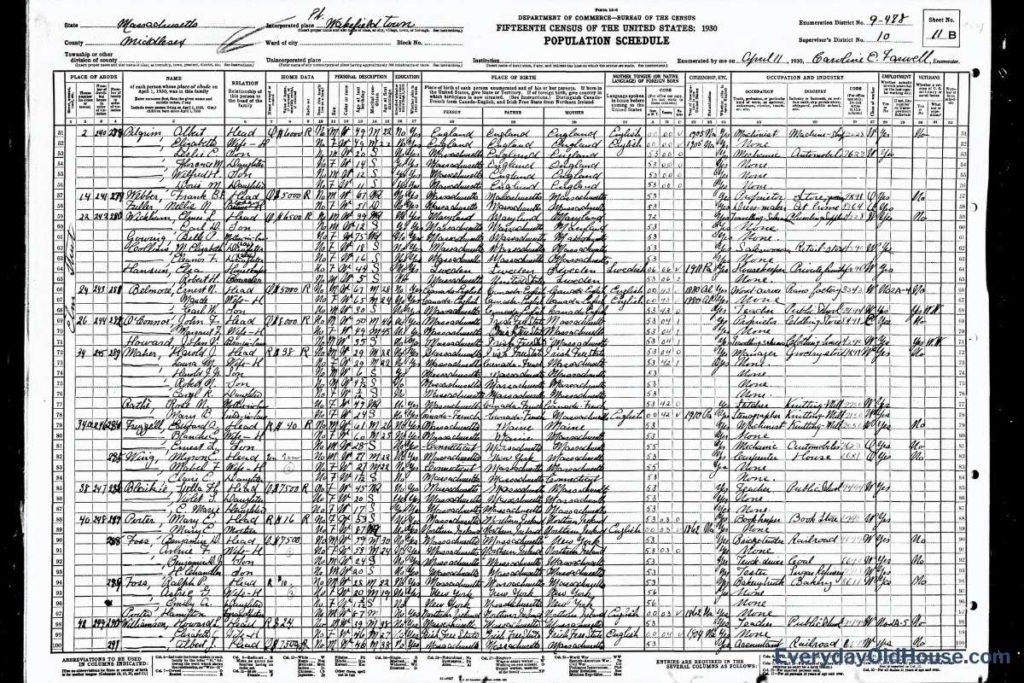
Tutorial: US Census to Find Your Property’s History
Like most databases, the US census can be overwhelming and a bit frustrating to work with. Or maybe it’s just me…..
Stay patient and don’t give up!
To walk you through how to use the US census to find your property’s history, I’ll illustrate with an example: my grandparents’ old Victorian house in Newport, RI. Their house was built in 1900 (based on town assessor records). My grandparents lived there from about 1950s to 1990s.
Step 1: Look up Enumeration District (ED)
Before roll up your sleeves and dive into the census database, stop!!! Save yourself a LOT of time and frustration to first find your home’s ED (Enumeration District) number.
What is an Enumeration District?
Starting in 1880, to collect demographics more efficiently, areas were blocked out on a map and assigned Enumeration Districts (EDs). Commonly, boundaries of EDs comprised major roads, city blocks or natural features such as rivers. Here’s the ED map for Newport, RI for 1950. Each ED is outlined in orange is a assigned a label starting with a “3-X”.

The size of EDs varied. In urban areas, an enumeration district covered only a few blocks. Or even just an institution, like I found for Newport Hospital.
In less densely populated areas, such as rural areas, an ED may cover many square miles, or even a whole county.
The 1950 census defined an ED as “a geographic area that a single enumerator (census taker) could complete within two weeks in cities or within 30 days in rural areas.”
Census takers would be assigned these EDs and go door-to -door, knocking on doors, collecting information, and documenting it in enumeration books. Or at least until 1960, when the census bureau started leveraging the ability to mail census questionnaires directly to residents’ addresses. Census takers referred to comprehensive guidebooks, like this one in 1930 that was over 50 pages!
How Do You Find EDs?
In my personal opinion, the easiest way for homeowners to find their home’s ED is through Stephen Morses’s Unified ED webpage. While at first glance it looks like a basic website, this is am amazingly powerful website with invaluable tools to steer you towards the right ED and ultimately, census page.
Working backwards, I started with the 1950s census, as shown at the top of the webpage. And as you can see from this screenshot, after I entered the state, county, city and street, the ED for their house for the 1950s was 3-37.
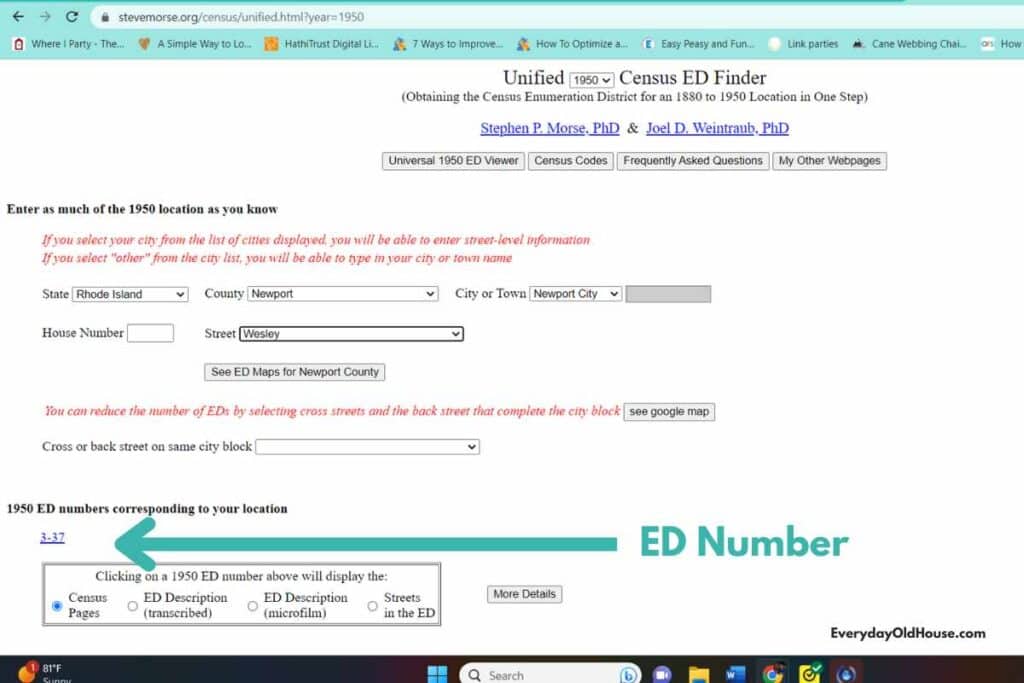
Newsflash….EDs Change Every Census…
To make things a bit more inconvenient, your home’s ED will be different for every census. In otherwords, my grandparent’s house ED number was not going to be the same for the 1940, 1930, etc… censuses.
Luckily, Stephen Morses’s webpage provides ED numbers as far back as 1880. Gather ED numbers from this website before heading to the census.
What if Your Street Isn’t in the Database?
Knowing that my grandparent’s house was built in 1900 (based on online building records), I wanted to go all the way back to at least the 1900 census. So I repeated the process going back to 1880.
But I ran into a few problems…
My grandparent’s street wasn’t listed as an option in the pulldown list for the 1930 census or before. Why? Who knows. The street definitely existed. Maybe it had a different name? Whatever the reason, it wasn’t translated into the online database.
But this wasn’t a problem. Luckily, there are a few options to still determine the house’s EDs: 1. ED Maps, 2. Cross Streets, and 3. More Details.
1. ED Maps
The “See ED Maps for X County” button takes you to the National Archives database where you can download a map (like the one shown above), search for your home, and determine the ED.
Note that sometimes I found the map fuzzy online, but a downloaded copy was easier to zoom and read.
2. Cross Streets
My grandparents lived on a small street sandwiched between two main roads. A second way to determine the ED is using the “cross or back street on same city block” tool.
By entering those two main streets, I was able to narrow down the list of potential EDs from 20+ EDs to only 2. Next, I clicked the “More Details” button, which brought up a written description of the areas depicted in each EDs. From there I was able to decipher the right ED (3-17).
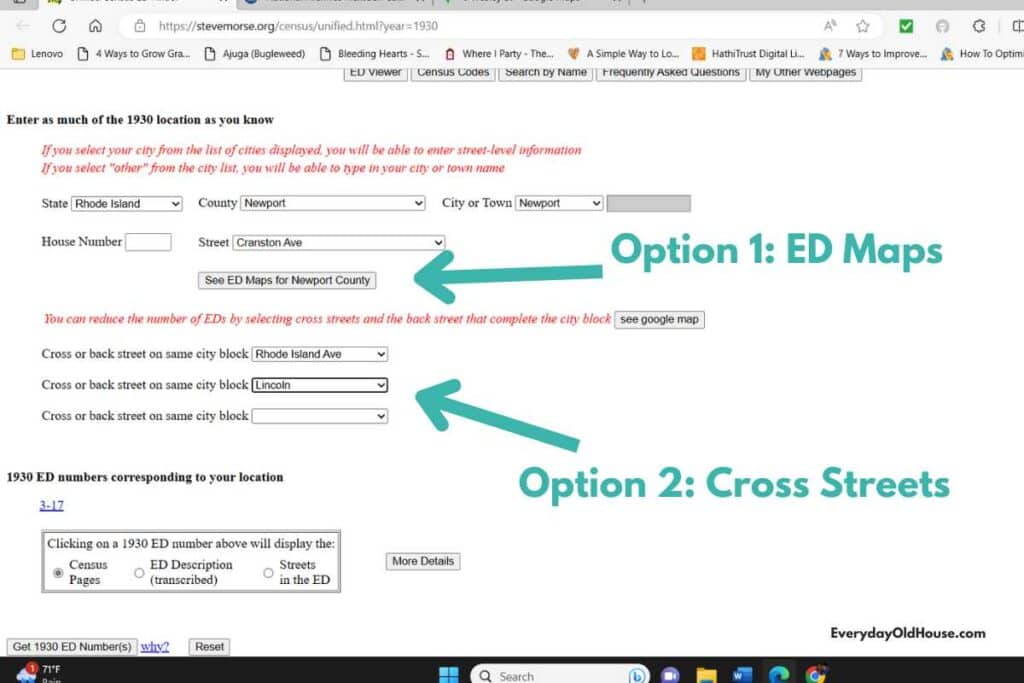
3. “More Details”
As I went further back into the census, the less information there was. Which makes sense – the city was slowly growing. As you can see below, for the 1910 US census, there were no options of choosing street in the pull-down menu.

But I was able to find the ED by clicking the “More Details” button, which resulted in a list of EDs with boundary descriptions. For this, you have to know your local geography a bit. Reading through the descriptions I was able to find cross streets for my grandparents’ house and determine their home was located in “newport-38”.
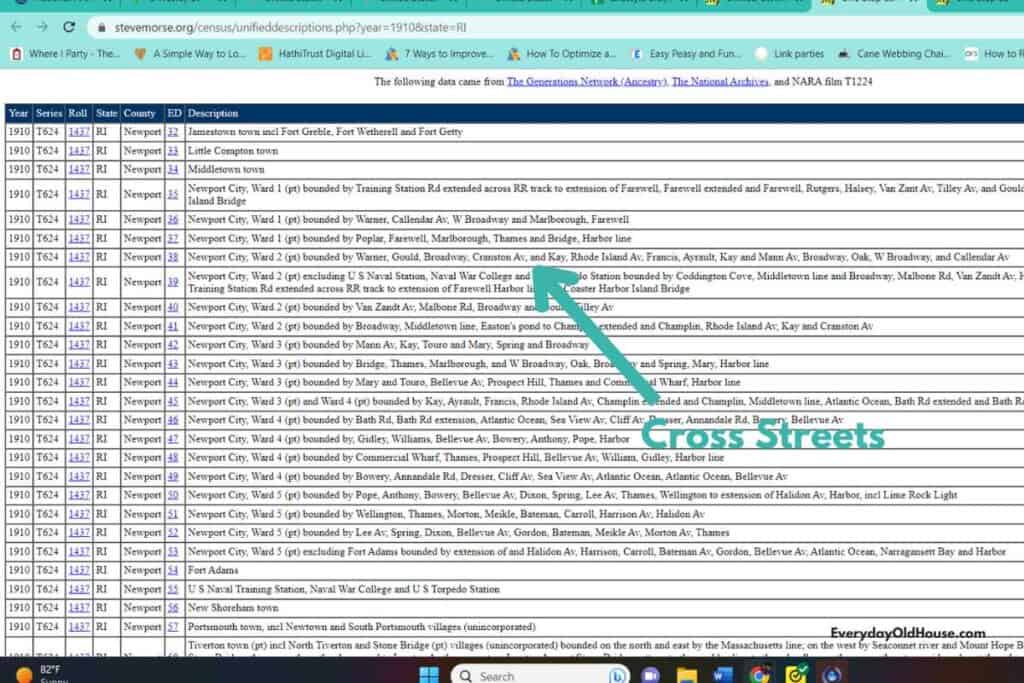
Step 2. Find Correct US Census
Once you’ve discovered your ED numbers, it’s time to dive into the census. Personally, I found the direct National Archives and Records Administration the fastest to show images, BUT the free FamilySearch.org easier to navigate and had a clearer zoom.
My recommendation? Goof around on both and see what works for you.
Here’s how I found the 1950 census pages for my grandparents’ house at 6 Wesley St in Newport, RI using both the National Archives and FamilySearch.org:
National Archives
- The National Archives has a page with links to each available census here.
- Find the year of interest and click through to its main page.
- Alongside the left-hand side, are various inputs. I entered “Location” and “Enumeration District”.

FamilySearch
- Google “familysearch federal census” and the year of census of interest. In this case, I was searching for 1950.
- You should see a screen like the one below.
- Click the “Browse through 7,849,989 images”.
- Narrow down to state and county using the left-hand Refine Your Search Option. And then using the search on your computer, enter the appropriate ED number.
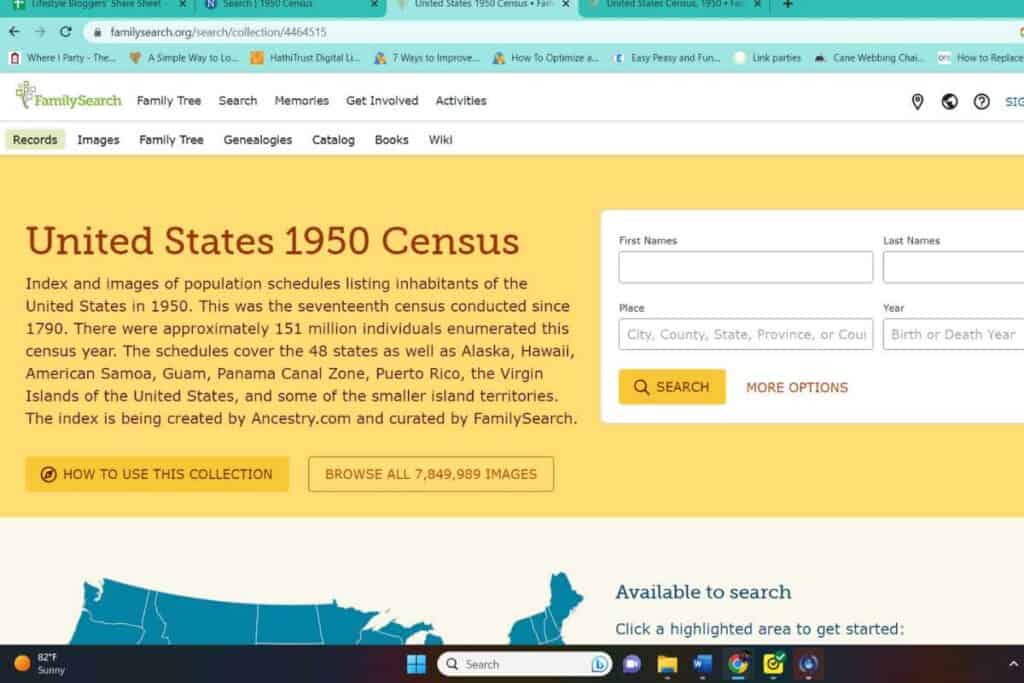
Wah-la! You’ve found the enumeration book for that ED.
Step 3: Find Exact US Census Page
Unfortunately, this is where your patience needs to kick in. Enumeration books were arranged by street and then by house numbers. You may have 30+ pages in an ED book to search through.
The fastest way to identify your home is to familiarize yourself with the columns listed at the top and find the STREET column (usually one of the first columns). You will likely find it written vertically in somewhat difficult to read handwriting.
BUT stick with it!!!
From the 1950s census I discovered that Anthony Silveira, a white male aged 34, lived in the house with his wife (Hortence – age 31), 4 children, ages 5 to 1. He owned a restaurant and she was a housewife. All were born in Rhode Island.
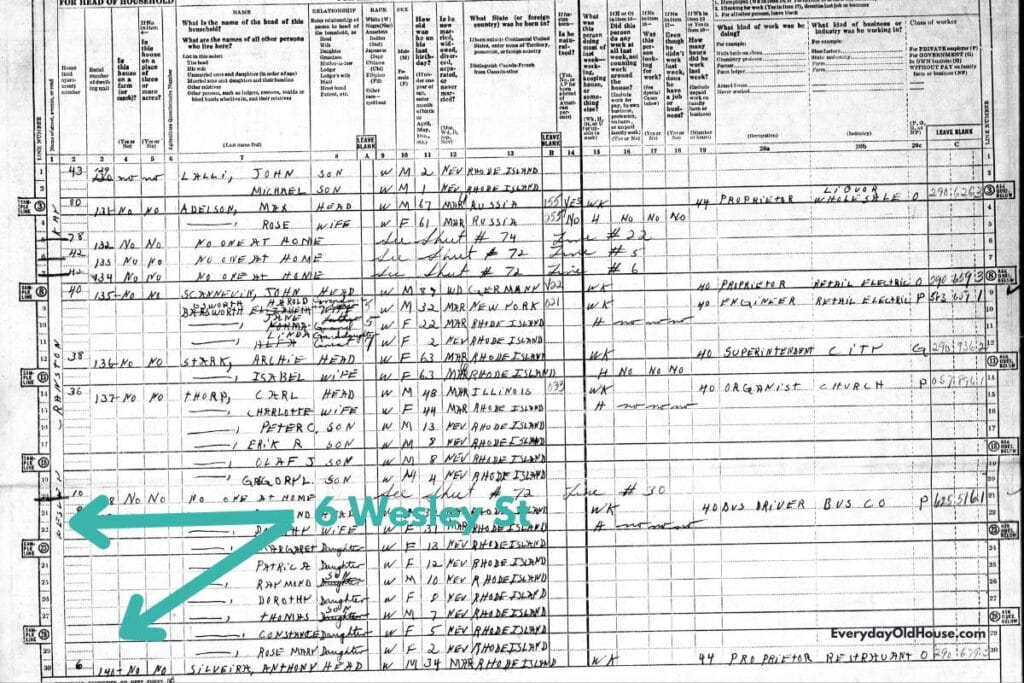
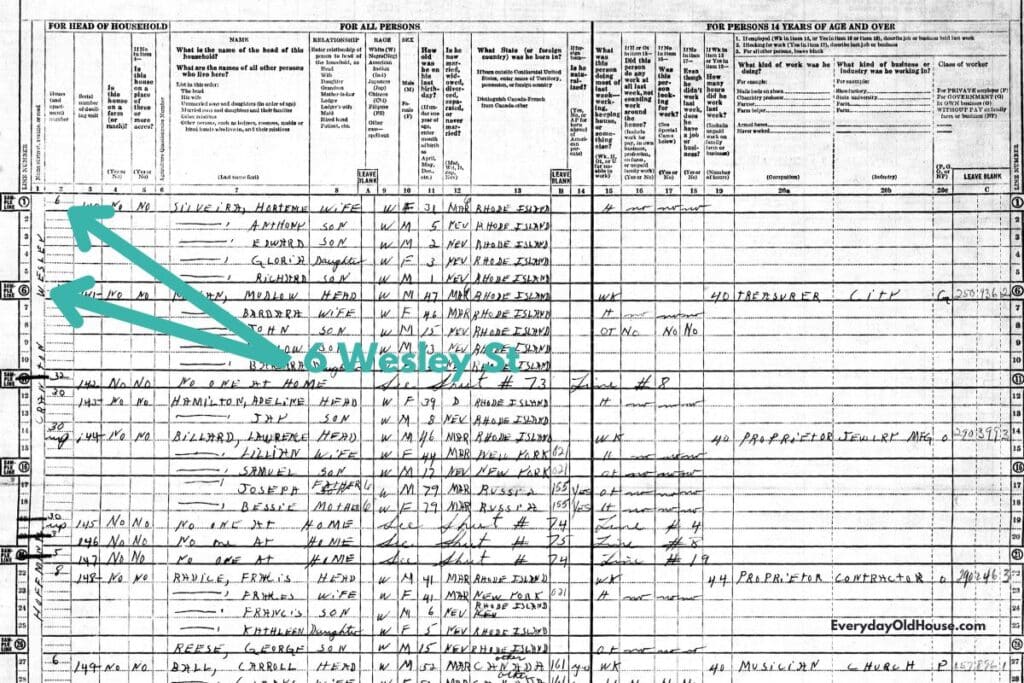
Ironically, Silveira is the last name of my grandmother from the other side of my family. I wonder if there is a connection?!?!?! Hmmm….
In 1940, a different family lived in my grandparents’ house. Harold Adamsky, aged 35 with his wife Bessie (age 39) and two children (age 10 and 8) had lived there since 1935. Harold and hs wife were born in Massachusetts. He owned a grocery store, and it appears the wife may have worked there as well.
In addition, a nephew Barnes Cohen (age 28) and a housekeeper named Joseph Silvia (age 30) and his wife Olive (occupation listed as a maid) also lived there. I’m intrigued by the housekeeper and maid. Did Joseph and Olive work for Harold? Or did they merely rent one of the bedrooms on the top floor and worked as housekeepers elsewhere?
BEGINNER’S GUIDE TO HOME HISTORY RESEARCH
Interested in researching the history of your old house but unsure where to start? Grab my newly-release:
Beginner’s Guide: How to Trace the History of Your Old House
This 60-page guide takes you step-by-step through 25+ online and in-person resources to create a picture of your home’s history.
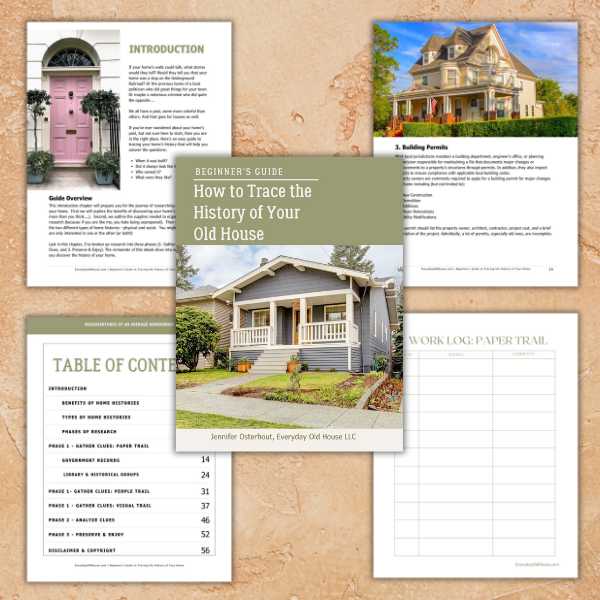
6 Tips for Using the US Census to Find Your Property’s History
All databases have their quirks and limitations, so here’s a few additional tips to consider as you work through the US census to find your property’s history.
Tip #1: Conduct Deed Search
Before you dive into online census records, take a few minutes to check your local government records or conduct a free online deed search. These few minutes will give you important information such as home’s construction date and names of previous owners.
Why? Knowing your home’s construction date will help you decide how far back into the census to go (although that shouldn’t stop you from going further back). And knowing the names of previous owners can aid in deciphering a handwritten census difficult to read.
Tip #2: Work Backwards
When working with the US census, I find it easiest to begin with the most current year available (1950) and work backwards. The more recent censuses have more information, have searchable inputs (for example, names), and just easier to understand.
Tip #3: Renters vs Owners
The census documented who lived in the house, not who owned the house. If you truly want to know who owned your house, you must do a deed search.
If the names on the census don’t match the property deed, then you likely have a landlord/ renter situation.
Tip #4: Missing 1890 Census
Unfortunately, a significant portion of the 1890 US census was destroyed in a fire in 1921. Therefore, don’t be surprised if you can’t find info for that particular census.
Tip #5: Can’t Find Address?
If you can’t find your address in the census, check the back of your ED section you are browsing.
If occupants didn’t open the door the first time the census taker was in the area, they may have returned later and taken the household demographics then.
Tip #6: Different or No Street Address?
Unfortunately, as cities and towns developed, street names and numbers changed. Plus, some rural areas didn’t even have official street names and numbers.
Reach out to your local historical society and government agencies. Consult maps or street directories to get historical information.
Questions?
Still struggling with how to use the US census to find your property’s history? Feel free to contact me with additional information (especially address) and I’ll take a stab at finding the records!
Related Posts
Want to be the first to know about new posts? Be sure to follow me on Pinterest, Facebook, Instagram or Twitter of even Etsy! Or better yet… Subscribe below!
My monthly (admittedly sometimes more, sometimes less….) emails are like receiving a unexpected letter from an old friend WITHOUT needing to put on your slippers and walk out to your mailbox…. See? I got ya, my friend!)
[Note: My posts are proudly connected to these amazing link parties full of DIY ideas and inspiration!]
Disclaimer
I am not a professional home genealogist (nor play one on tv….). However, as a environmental consultant for 10+ years, I researched the history of 100+ commercial properties for property owners, potential buyers, and real estate developers. I utilized a variety of historical databases and resources – historical maps, government databases, interviews, and property visual clues – to create a picture of a property’s past.
My mission is to use these consulting skills (combined with genealogy classes) to help other homeowners to research the history of houses.
Note that my experience is limited to the United States. For European homes, I suggest this website.


